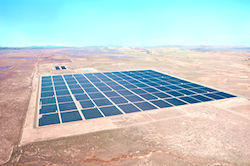The California Air Resources Board has released a proposal to transition to a new version of the GREET model that is used to determine a fuel’s greenhouse gas reduction score or more specifically, the direct lifecycle carbon intensity as part of its Low Carbon Fuel Standard (LCFS). CARB has proposed to use Argonne National Laboratory’s latest version of GREET as the basis of its update to the original California GREET model, which was  introduced in early 2008 and has been in use for the past six years.
introduced in early 2008 and has been in use for the past six years.
Geoff Cooper with the Renewable Fuels Association (RFA) has submitted comments to CARB and writes, “We believe Argonne’s GREET1_2013 model contains a number of important improvements and updated inputs that more accurately reflect the current CI performance of corn ethanol and many other fuel pathways … it is encouraging to see the LCFS regulation finally catching up to the actual state of the industry.”
RFA believes CARB’s migration to the newer GREET version is a step in the right direction, but “several additional revisions to CA-GREET2.0 should be considered.”
Cooper outlines three specific changes that RFA would like to see CARB address to the new GREET model:
- CARB should integrate the Argonne GREET1_2013 default assumptions on ethanol co-product feed (i.e., distillers grains) displacement rates.
- CARB should revise the CA-GREET2.0 model’s treatment of emissions from agricultural lime application based on new data from the U.S. Department of Agriculture (USDA).
- CARB should adopt the GREET1_2013 methodology for estimating land use change (LUC) emissions in lieu of CARB’s current standalone GTAP methodology.
“Adopting these recommendations would further reduce corn ethanol’s direct CI score by 8–10 percent, and would slash CARB’s current ILUC factor by approximately 70 percent,” according to Cooper. “Integrating RFA’s suggested revisions, along with the proposed changes already planned by CARB, would better reflect the actual nature of ethanol’s lifecycle carbon intensity and confirm ethanol’s ability to significantly reduce GHG emissions relative to gasoline.”










